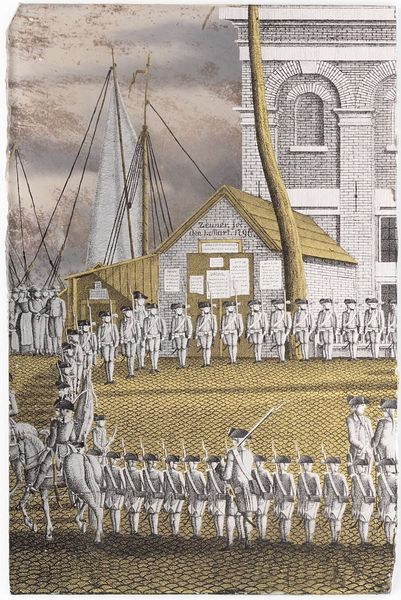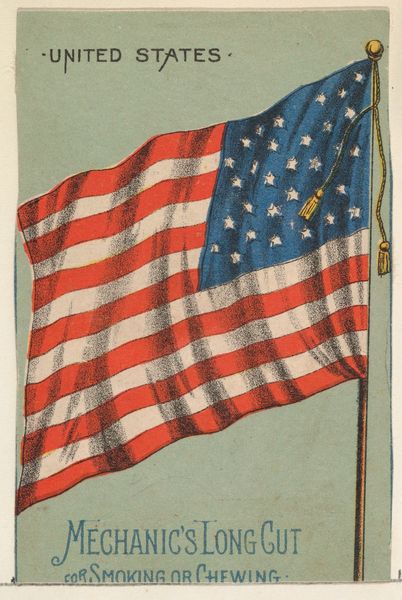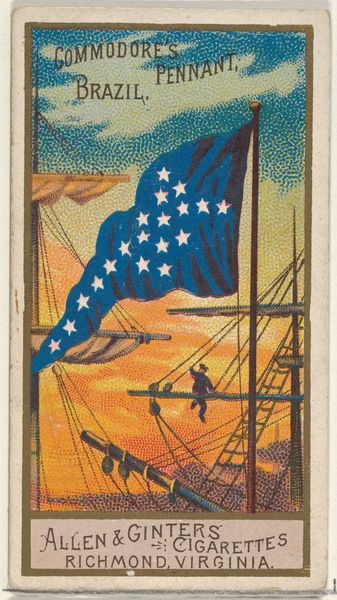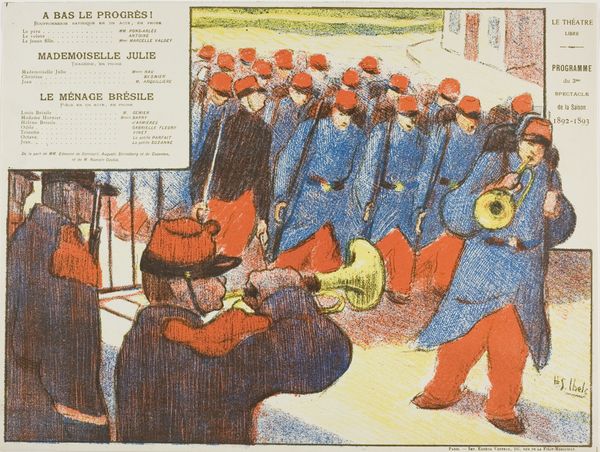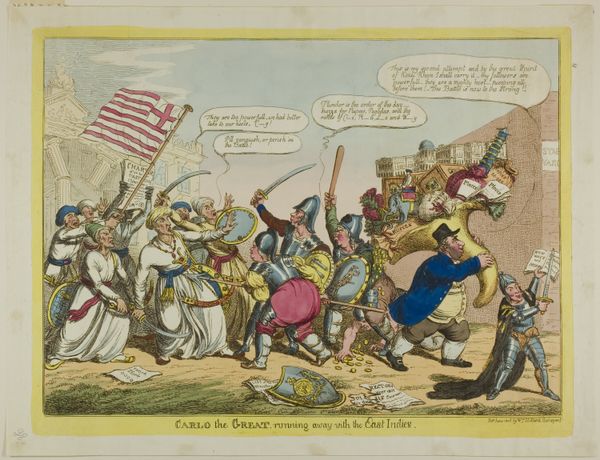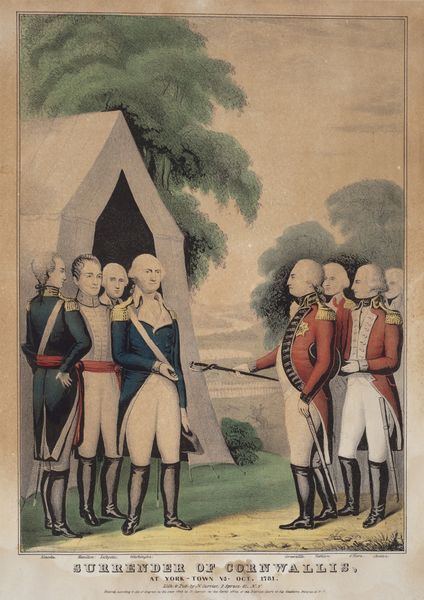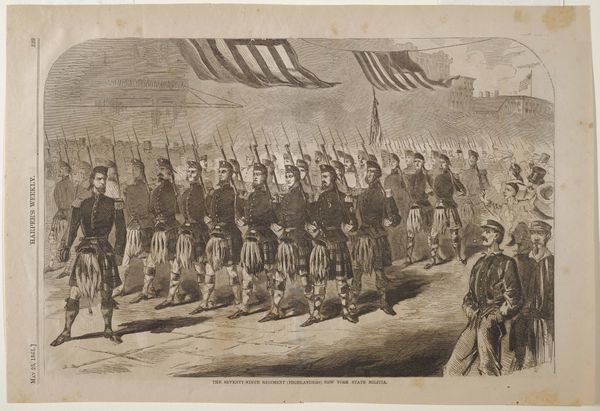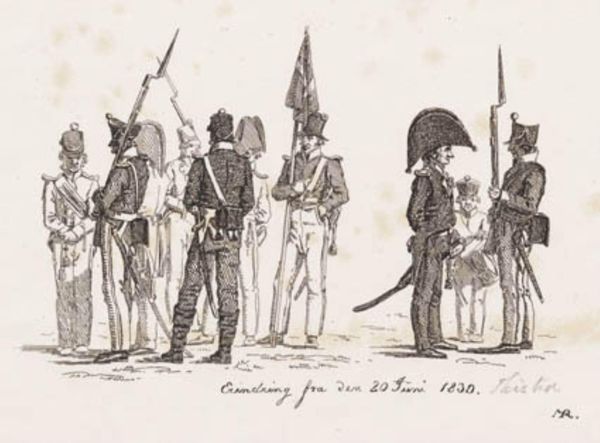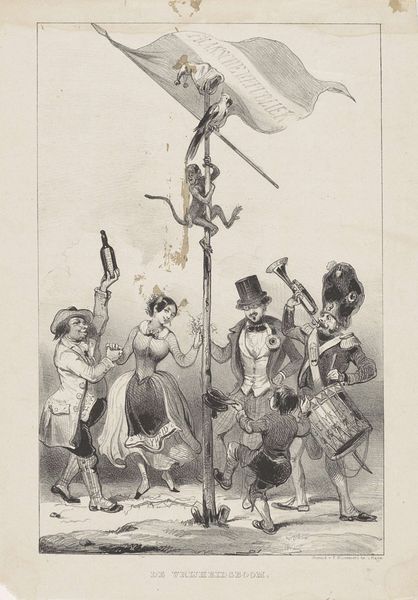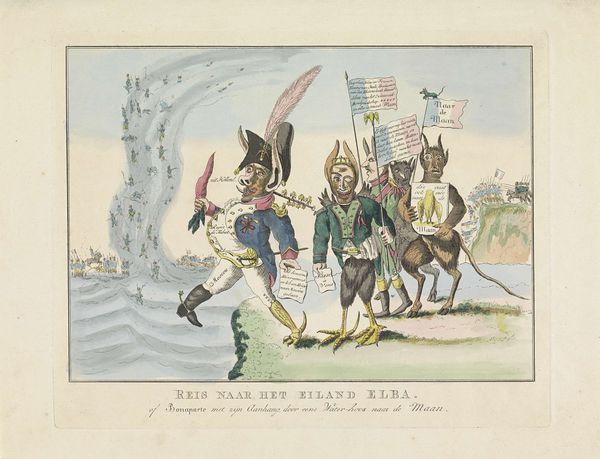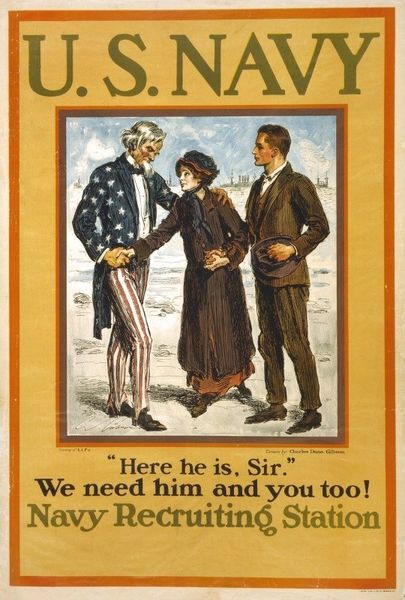
drawing, poster
#
drawing
#
poster
Copyright: Public Domain: Artvee
Editor: So, here we have "Cadet Days, a story of West Point" a poster designed by Edward Penfield in 1894. The women in the foreground seem so vibrant against the subdued tones of the cadets. It makes me think about who exactly the story is for. What jumps out at you when you see this? Curator: The stark contrast in color definitely highlights the differing social spheres – the structured, masculine world of West Point contrasted against the observing, arguably more free-form feminine perspective. Look at the rigid line of the cadets versus the flowing lines of the women's dresses. Notice how the artist employs those sharp lines of the uniforms against the sinuous curves of the natural backdrop. What memories, what associations do those visual differences evoke in you? Editor: I see how the poster uses different visual cues to signal masculinity and femininity... the cadets as symbols of order and discipline and the women symbolizing something…softer. It seems that Penfield may be trying to reflect something about the social structure, as you suggest, but I can't figure out what exactly! Curator: Think about it – military academies often signify a rite of passage, a structured transition to manhood. But what is the role of women, particularly during that period, watching, observing, but also influencing? Consider what each figure might signify within that social dynamic, reflecting desires, constraints, and perhaps, aspirations. What does the positioning of the women to the side of the composition signal? Editor: I guess that the women in the front right visually invite us, as the viewer, to look at this scene. They guide us toward this disciplined masculinity and bring their different energy to the picture. They appear like intermediaries or ambassadors... Curator: Precisely. Their placement implicates us, involving us within this cultural narrative and inviting us to analyze our positions relative to these roles and memories that we assign these gendered figures. Editor: I never thought about it that way, how an image could encourage me to analyze my assumptions so personally!
Comments
No comments
Be the first to comment and join the conversation on the ultimate creative platform.


